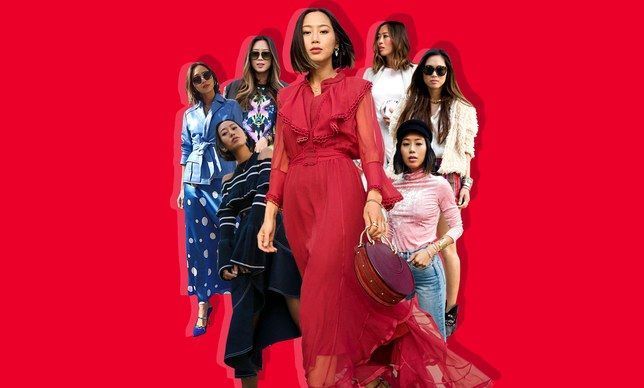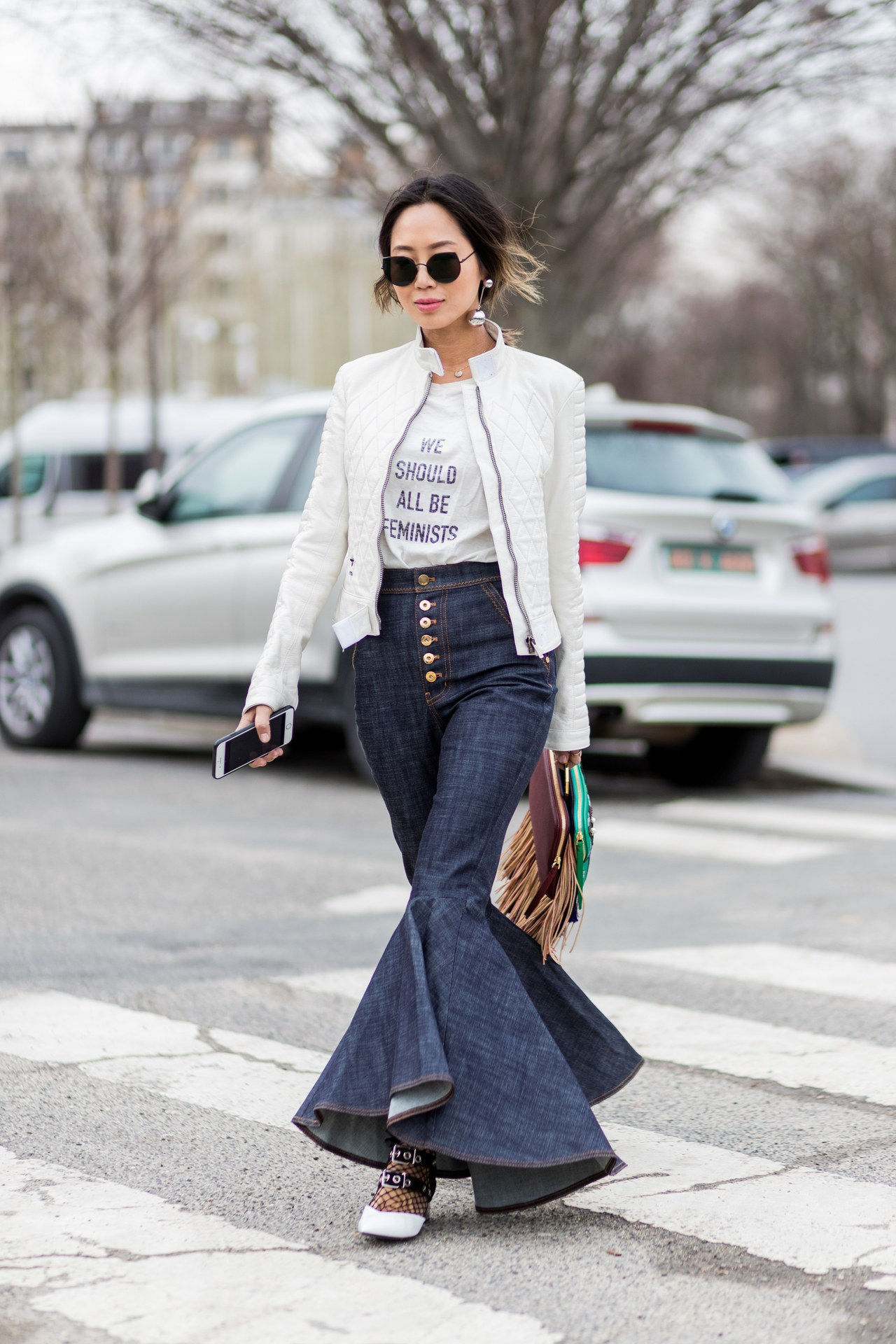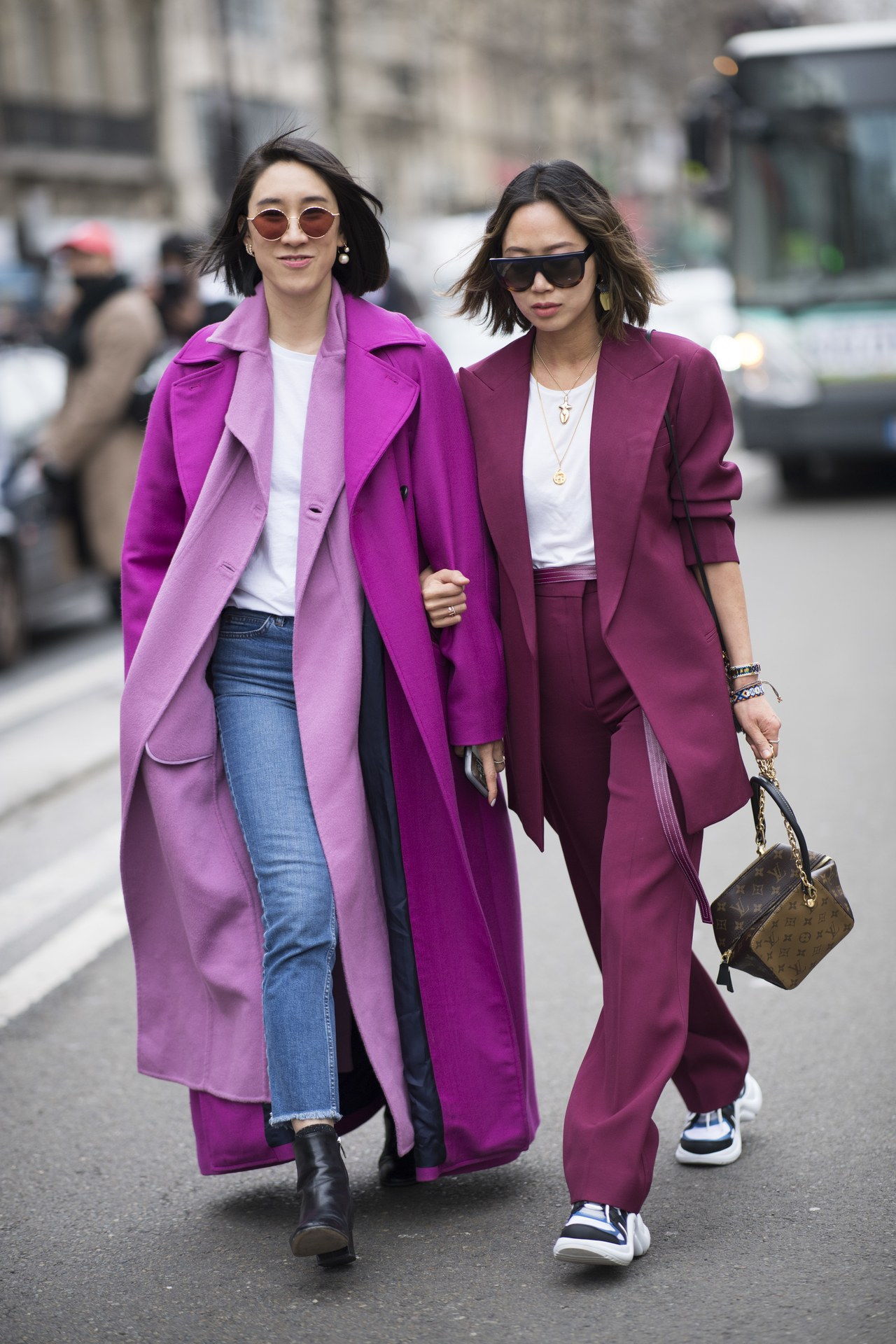After Almost a Decade, Aimee Song’s Influence Is More Bankable Than Ever

If you follow fashion blogger Aimee Song—a.k.a. Song of Style—on Instagram, you’ve seen her dancing at Coachella, posing in Tokyo, and lounging at the Hôtel Plaza Athénée during Paris Fashion Week. A never-ending vacation the uninformed onlooker might assume, but the truth is, every place Song travels to is for work. Just a different kind of work. In the desert she committed to wearing clothing from e-comm site Revolve and attended its many pop-up events; the trip to Tokyo was to party with fans; and part of her duties in Paris was to promote a new designer fragrance, which she did nestled in her gorgeous hotel suite.
All in a day’s work for women like Song; women who have leveraged their own brand—i.e., themselves—and turned photos of their outfits into thriving, modern, very lucrative businesses.
The idea of making a living wage of nothing but your influence is eye-rolling to some, but the people doing the scoffing might be surprised to learn how much money can be made this way. A recent survey of 5,000 influencers revealed that 42 percent charge between $200 and $400 a post. But for those with audiences of Song’s size—at press time, her Instagram follower count is 4.8 million—they can charge exorbitant rates for their sponsored content (#sponcon, in digital shorthand.) According to The Wall Street Journal, once you hit the coveted million-follower mark, you can earn up to $15,000 per post, and even receive equity in the company you’re shilling for.
Song is among a highly elite squad of ultra-influencers, with million-plus followings. Others include Chiara Ferragni, who was projected to make $9 million in just one year off partnerships, @somethingnavy’s Arielle Charnas, whose Nordstrom line is rumored to have sold over $1 million worth of clothing in under 24 hours, and Chriselle Lim, who was said to have walked away from a reported million-dollar deal.

A recent look featured on Song’s blog
Song’s current ventures include her popular fashion and lifestyle blog, a YouTube vlog, her jewelry line, and a clothing line. She’s currently an ambassador for Chloé, Giorgio Armani Beauty, Dior, and Revolve, and has formerly worked with Laura Mercier, which earned her a reported half a million dollars for a year contract. And it’s not just every social media post she touches that turns to gold—she recently did a sunglasses collaboration that sold out in under 22 minutes, she was named to Forbes‘ 30 Under 30 list in 2016, and her book, Capture Your Style, scored a spot on The New York Times best-sellers list.

Song during Paris Fashion Week in March 2017
And while it might seem as though women like Song came out of nowhere and started scoring six-figure retail deals, the 31-year-old has been working at this for over a decade, when she started a blog during her freshman year of college—before influencer networks, before FTC regulations for bloggers, before Instagram’s “paid partnership with” template, hell, before Instagram. Her initial site focused on architecture, which she was studying at the time, but occasionally she’d include some snaps of her favorite outfits which usually combined affordable brands like H&M with a few choice designer items, earned via retail-work paychecks.
Turned out, readers were more interested in seeing how Song styles clothing than what she was eyeing for her dream home. Song of Style started racking up legions of loyal followers, though Song considered it a passion project, not a business. “[I had no idea] bloggers could make money at all,” she tells Glamour. But it didn’t take long for brands to realize the potential that comes with eager shoppers buying what a young, pretty blogger essentially tells them to.
“About a year in, brands started asking me if I wanted free clothes in exchange for posting about them,” Song says. “I was like, ‘Oh, I don’t have to shop for these?’ since I was working three jobs at the time.”
Song did a few posts in exchange for clothes, then fast-fashion brands came calling. But this was 2010 and onboarding influencers was a new frontier for companies, many of which assumed bloggers like Aimee—not a model, an actress, or a recognized It Girl—would work for very little money. Plus, Song didn’t know her worth and therefore had no flat asking fee—or any fee—worked out.
“I’d [often] have to pay for my own flight [to a shoot],” she says, adding that plenty of companies would position it as “you’re very lucky to be in this campaign.” And she was, she says. “My 20-year-old self was like, ‘Wow, this is so cool.’”
Song recalls a particular experience when, living in San Francisco, she flew herself to another city for an eight-hour-shoot with no breaks. “I styled 12 different looks, did the creative, [modeled], and did a video interview,” she says. After spending the full day commanding the set—Song realized she really didn’t have much to show for it. “They said they’d put [me] on their newsletter, credit me as a stylist and a model. But then I was like, ‘Wow, I worked so hard, I had to miss work, and I’m negative in my bank account. What did I actually get out of this?’” Yet she still couldn’t dismiss the voice in her head that told her, “I should feel lucky they chose me.”
Loading
View on Instagram
A few months later a brand she hadn’t worked with, Fossil, reached out. When they called to talk logistics, something felt different. “They asked for my social security number and all these tax questions,” she remembers. “I was like, ‘What? What is this for?’ Then they were like, ‘It’s so we can pay you.” It wasn’t much—a round-trip ticket to their shoot in Texas, and a flat flee of about $300 a day or so—but it was enough to get Song really thinking. “That was the first time I thought a legit company will actually pay you because they believe in your time, your work, your skills. From that point on I stopped doing freebies.”
Around the same time, bloggers were becoming a new force in the fashion world. In 2009 a gaggle were invited to sit in the front row at a Dolce & Gabbana fashion show—seats typically reserved for A-list editors and stars. In 2010 Instagram launched and kicked off a way for bloggers to instantly interact with their followers, while reaching audiences their blog couldn’t.
This was also the time Song was beginning to realize the value of her brand in a real way—and its monetary potential. “I realized that if I could constantly get paid jobs, then I’d only have keep my internship and quit my other two jobs that I didn’t like.” Landing the Fossil partnership had made her realize that maybe blogging didn’t have to just be just a hobby.
Loading
View on Instagram
The big money didn’t come right away. At first she’d negotiate for perks like free flights and hotels for New York Fashion Week—a dream come true for a girl who’d never even been to New York City—and smaller fees for local shoots. But as her Instagram and blog following climbed, the more money moves she made. The real game changer, she says, came when she landed her Laura Mercier deal. “It started out as an organic partnership where I was just using their products,” she says. “Then we had a meeting and they asked about what I thought about potentially becoming a brand ambassador. It was the first time a beauty brand wanted to work with someone who wasn’t a traditional beauty blogger. It was also very rare for a major beauty brand to sign someone who wasn’t a model or a celebrity, and [who was] a person of color. It opened up doors for me.”

Song, center, with fellow influencers at a Revolve event during the 2018 Coachella festival
Now when Song goes to fashion shows she doesn’t have to beg for a flight; she’s flown in and sits in the front row near new friends like Instagram director of fashion partnerships Eva Chen or celebrities like Chrissy Teigen.
But even though the jobs come easier now, and are often more glamorous, it doesn’t mean Song has to hustle any less. She travels for work “close to 300 days out of the year.” And because of the nature of her company, there isn’t a separation between when the work day ends—or when Aimee Song, not Song of Style, begins. Even when an Instagram post isn’t sponsored, each and every photo has to maintain an aesthetic that embodies her brand and, often, the companies equating themselves with that brand. And Song is a perfectionist, “There are four of us that work at Song of Style, with one intern. But I’m still trying to figure out the best way of managing people since I’m so used to doing everything myself.” That’s the hardest part, she says, “trying to let go and let other people help with my vision.”
Yet there’s still things she chooses not to delegate. “Instagram is something I do all alone,” she says, “When I have a vision of what I want the photo to look like, I can take as little as two to three photos, but I’m guilty of having 50 selfies that look almost identical just to get that one shot that I’m somewhat satisfied with. Then I’ll edit the photos myself and upload them.”

Song with Eva Chen during Paris Fashion Week fall 2018
Another essential part is curating her feed to maintain its “flow.” “I definitely don’t post sponsored content every single day unless I’m on a trip sponsored by a brand,” she says, adding that posts are spread with nonsponsored ones making up the majority. This is all to keep her account looking as authentic as possible. Because the job of an influencer is never to actually sell you something—they’re just there to tell you that they’re obsessed with this product and you’d probably love it too.
As far as fashion bloggers turned buisnesswomen go, Song is one of the most recognizable—even to those outside the fashion industry. But she says her definition of “making it” had nothing to do with hitting the million-follower mark. Instead she measures success by personal benchmarks, like “when I found out that my grandmother in South Korea goes around to her morning hikes with a magazine I’m in [and] when I raised over $88,000 with Charity:Water just through donations,” she says. Then, casually:
“Oh, and this morning—when Rihanna DM’d me.”

